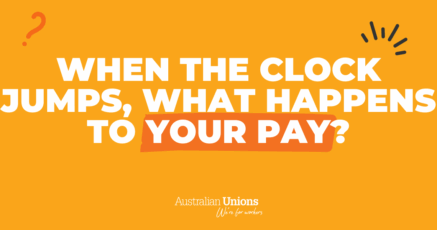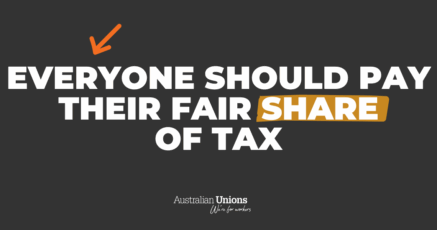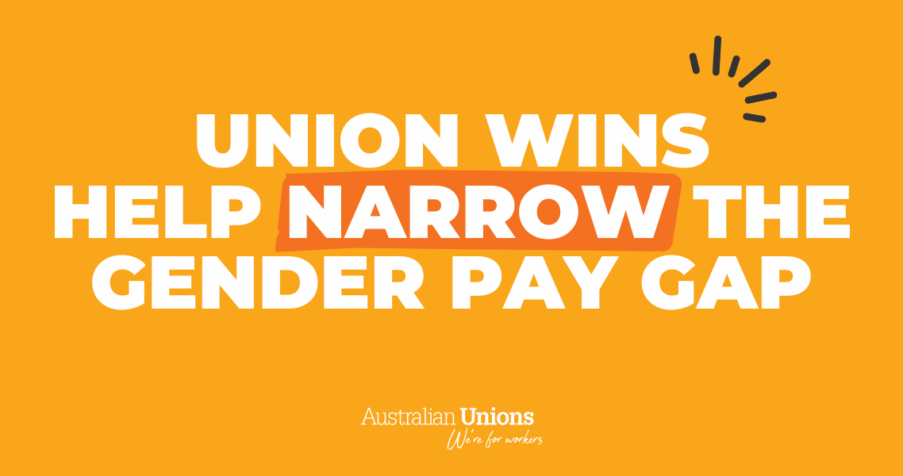Do you ever get the feeling someone is watching you? It’s not just because it’s the spookiest day of the year – it could be your employer.
“The boss has a habit of sitting at home or in his office and watching staff through the security cameras, he’ll then call the cafe to complain about whatever you’re doing. Absolutely creepy.”
So reported a casual hospitality worker in a 2020 United Workers’ Union report.
This type of workplace situation is sinister, sneaky and subtle. And it’s just one example of a larger problem known as ‘surveillance creep’.
Creepy? Creepy.
There is a 70 per cent chance your workplace uses digital surveillance, according to a 2018 report from The Australia Institute (and the figure may well be higher in 2022).
The research found that many forms of digital surveillance were in use in Australian workplaces.
Most common forms of digital surveillance
- Monitoring of web browsing
- Monitoring of email content
- Monitoring via camera
- Monitoring of social media
Workplace surveillance is found in all types of jobs, from shift workers in homecare who are GPS tracked via an app at all times (even on days off), to permanent full-time staff who identified significant amounts of internet monitoring.
Some of the most strictly monitored workers in Australia – especially in the digital realm – are public servants. Members of the Community and Public Sector Union pushed back against new rules that would see workers face disciplinary action over a private email or ‘liking’ certain social posts.
The trend is far from industry specific and, as many workplaces shift more online, surveillance creep becomes even more unsettling.
A creep upwards in workplace monitoring
For the past few Halloweens, it’s not just the undead that have risen. So too has the use of workplace surveillance.
“The pandemic and shift to home work has only intensified monitoring trends,” said an Australia Institute submission from around six months into the pandemic.
One key figure that indicates the sudden increase in surveillance creep is sales of monitoring software.
Companies selling employee-monitoring software reported a 300 per cent sales increase between March and May 2020. Common features of these work-from-home surveillance technologies include:
- recording shift start and end times
- recording how long is spent on a website or in a program
- monitoring if the worker is physically at their computer and tracking location using complementary software apps installed on the worker’s phone
- taking screenshots of the computer screen at regular intervals
- the ability to log in and access the computer live
- monitoring keywords and emails
One United Workers Union member described how when working-from-home, the fire alarm in their apartment building went off and he had to log off and evacuate.
The worker found that the resulting “downtime” of 30 minutes was deducted from his weekly earnings.
Australian Services Union organiser John explained what employers mean by “adherence” and “leakage” in these kinds of circumstances.
“[Employers] put the amount of time you spent logged in against the amount of time you were supposed to be logged in, and if they don’t match up well enough your ‘adherence’ is deemed not good enough,” he said.
“You also get what is called ‘leakage’, which is an awful term to use when talking about people taking bathroom breaks.”
It is easy to see how many of these monitoring techniques can easily start sliding into our personal privacy and lead to poor mental health. So why do employers do it?
The purpose of workplace surveillance
The use of workplaces surveillance comes from the theory that if workers are watched, they will produce a maximum amount of work effort and hence generate more profit.
However, researchers have discovered that this supposed maximisation of worker productivity is inconsistent in practice. They also have identified one of the best ways for workers to assert their privacy rights at work: Enterprise Bargaining Agreements (EBAs).
EBAs are agreements constructed when workers bargain with employers for better pay and conditions.
These agreements can limit the ability of employers to penalise or discharge workers they believe to be uncompliant and so limit the effectiveness of intense surveillance.
It’s no secret that the strongest EBAs are those negotiated by unionised workers. If you’re not already member and want to see a powerful EBA at your work, join your union today.
It’s also important to keep in mind, legally speaking, workplace surveillance is a huge grey area. Laws are inconsistent across states and territories, making it difficult for workers to navigate on their own.
If you’re unsure about any surveillance practices occurring in your workplace, contact your union. Your union will conduct any conversation about your concerns in full confidentiality.
Cover photo credit: cottonbro






SHARE:
Feel like you’re being watched at work? It’s not just the Halloween spooks.